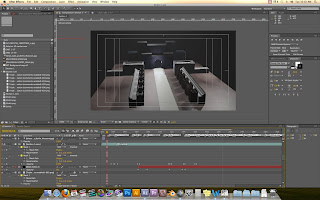I recently read from a communications textbook how the music industry is a case study for other industries on how not to behave towards their consumers. I can think of few things that have upset digital media consumers more than DRM (Digital Rights Management).
I've always had an unfavorable view towards technology that tries to limit control over media we buy. I believe that excessive restrictions and laws only hurt the good people; bad people will always find a way to be bad.

What can digital media artists like me learn from the music industry's mistakes?
First, a general principle: it's possible to stand on the freedom of consumers for a time in favor of one's own interests, but it will always backfire and prove to damage one's own interests more than granting freedom to consumers.
Second, we can see that laws are made for a "moral and religious people," as John Adams most eloquently put it. As I stated earlier, bad people will always find a way to be bad. The more laws we pass and measures we take to stop bad people only hurt the good guys in the long run while leaving the bad guys only momentarily hindered, if affected at all.
Consider the various ways there are to download music, movies, books illegally. DRM that protects movies, music, books and other media is easy to bypass (and it is fundamentally always possible to bypass by nature*). DRM only makes it so people who legitamitely use their media and follow the rules are limited in the end. Bad people will always find a way to be bad.
Third, laws that the government has passed contradict each other, making it necessary to reevaluate legislation and find out what are laws really mean. If you don't believe me, read the Digital Millennium Copyright Act. Then read about legislation governing reverse engineering and interoperability. Also, read about recent legislation that favors consumers and is backlashing on the interests of media creators.
The point is, simply as John Adams put it: laws are for a "moral and religious people." Why? Because most people with morals and religion believe that there is a greater interest than their own interests, and they are willing to respect the rights of others and live in harmony for the sake of their beliefs in something greater than themselves.
No amount of DRM will stop piracy. The tighter media producers squish the spring of consumer tolerance, the harder the backlash will be. I'm not saying that media producers should look the other way when people sell illegal copies of their media or legitimately damage revenue through unauthorized sharing or distribution; however, they should not restrict the rights of good people.
*DRM is a technology that encrypts digital data, but for humans to understand this data, it must always be converted to analog at some point. Thus, there is always at least one loophole for people to intercept and decrypt the data. See the Wikipedia article on the
Analog Hole, here.









